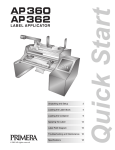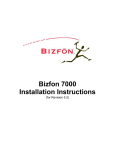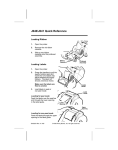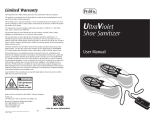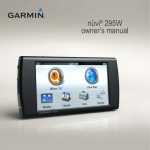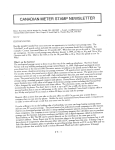Download Pitney Bowes J640 User's Manual
Transcript
8 Pitney Bowes Shipping and Weighing Systems Model J640 / J641 Pro-Mark Printer Operator's Handbook ," : T...~~"7"" r:; ;-:-T;.~~.,..-r , ~.- , .' ""!""'_.. ._~ ~,.:-:o;;-,:,"-,.,,,,, M:~.,~:"!","._'."- ; ~~':~:-.~- SV60253 Rev. D 11/96 ~ ~~-;-~ :-r:~"'~~.'~"-~'~ ,.- , -- "T" -~-:,.--'.-' :-~-.,,;.~.-;..' ':': @1995Pitney Bowes, Inc. All Rights Reserved. Each product and program carries a respective written warranty, the only warranty on which the customer can rely. Pitney Bowes reserves the right to make changes in the product and the programs and their availability at any time and without notice. Although Pitney Bowes has made every effort to provide complete and accurate information in this manual, Pitney Bowes shall not be liable for any omissions or inaccuracies. Any update will be incorporated in a later edition of this manual. WARNING This equipment has been tested and found to comply with the limits for a Class A digital device, pursuant to Part 15 of the FCC Rules. These limits are designed to provide reasonable protection against harmful interference when the equipment is operated in a commercial environment. This equipment generates, uses, and can radiate radio frequency energy and, if not installed and used in accordance with the instruction manual, may cause harmful interference to radio communications. Operation of this equipment in a residential area is likely to cause harmful interference in which case the user will be required to correct the interference at his own expense. CANADIAN D.C.C. WARNING This digital apparatus does not exceed the Class A limits for radio noise emissions from digital apparatus set out in the Radio Interference Regulations of the Canadian Department of Communications. Le present appareil numerique n'emet pas de bruits radioelectriques depassant les limites applicables aux appareils numeriques de la classe A prescrites dans Ie Reglement sur Ie brouillage radioelectrique edicte par Ie ministere des Communications du Canada. Trademarks J640is a trademarkof PitneyBowes,Inc. Preface This manual contains information about the printer’s ✦ features and functions ✦ general operation ✦ procedures for maintenance and troubleshooting. You can also obtain an optional programmer’s manual (Pitney Bowes form number SV60255). i J640 Operator’s Handbook Terms to Know ––––––––––––––––––––––––––––––––––––––––––––– ii continuous mode Print mode in which a format and data with a specific quantity are sent to the printer to be printed in one continuous strip. download (send) Transmission of data from the host to your printer. format Data stream that contains the specific label design for printing data. host Pitney Bowes device that the printer is connected to. label data Data stream that contains the actual data printed on a label. non-peel mode Feed mode in which the printer prints and dispenses labels without peeling them from the backing paper. on-demand mode Print mode in which the printer prints and dispenses one label at a time. peel mode Feed mode in which the printer prints and dispenses one peeled label at a time. online Direct communication between a computer and the printer. System Administrator Individual responsible for creating and downloading data streams. trigger Button used to feed and print labels, clear errors, and print a test label. Table of Contents Installation . . . . . . . . . . . . . . . . . . . . . . . . . . . . . . . . . . . . . . . . . . . 1–1 Power Supply . . . . . . . . . . . . . . . . . . . . . . . . . . . . . . . . . . . Connecting the Power Cord . . . . . . . . . . . . . . . . . . . . . . . . Connecting the Communications Cable . . . . . . . . . . . . . . . Communication Values . . . . . . . . . . . . . . . . . . . . . . . . . . . 1–1 1–2 1–3 1–4 Loading Ribbon and Supplies . . . . . . . . . . . . . . . . . . . . . . . . . . . 2–1 Loading Ribbon . . . . . . . . . . . . . . . . . . . . . . . . . . . . . . . . . . 2–3 Reloading a Ribbon Cassette . . . . . . . . . . . . . . . . . . . . . . . 2–4 Loading Supplies . . . . . . . . . . . . . . . . . . . . . . . . . . . . . . . . . 2–6 Loading for Peel Mode . . . . . . . . . . . . . . . . . . . . . . 2–7 Loading for Non-Peel Mode . . . . . . . . . . . . . . . . . .2–11 Printing . . . . . . . . . . . . . . . . . . . . . . . . . . . . . . . . . . . . . . . . . . . . . . 3–1 Printing in On-Demand Mode . . . . . . . . . . . . . . . . . . . . . . . Canceling a Print Job . . . . . . . . . . . . . . . . . . . . . . . Printing in Continuous Mode . . . . . . . . . . . . . . . . . . . . . . . . Using the Tear Bar . . . . . . . . . . . . . . . . . . . . . . . . . Interrupting a Print Job . . . . . . . . . . . . . . . . . . . . . . 3–1 3–2 3–2 3–3 3–4 Care and Maintenance . . . . . . . . . . . . . . . . . . . . . . . . . . . . . . . . . 4–1 Clearing Label Jams . . . . . . . . . . . . . . . . . . . . . . . . . . . . . . 4–2 Cleaning . . . . . . . . . . . . . . . . . . . . . . . . . . . . . . . . . . . . . . . 4–3 iii J640 Operator’s Handbook Troubleshooting . . . . . . . . . . . . . . . . . . . . . . . . . . . . . . . . . . . . . . 5–1 LED Indicator . . . . . . . . . . . . . . . . . . . . . . . . . . . . . . . . . . . Problems and Solutions . . . . . . . . . . . . . . . . . . . . . . . . . . . Specifications . . . . . . . . . . . . . . . . . . . . . . . . . . . . . . . . . . . Label Sizes . . . . . . . . . . . . . . . . . . . . . . . . . . . . . . . . . . . . . Ordering Service and Supplies . . . . . . . . . . . . . . . . . . . . . . iv 5–1 5–2 6–1 6–1 6–2 Chapter 1. Installation This printer is a tabletop, online-only unit used to print labels. A Pitney Bowes service representative should have installed the printer for you, but the following information is provided for reference. Power Supply –––––––––––––––––––––––––––––––––––––––––––––– The printer is shipped with an internal power supply that is universal for all input power sources. ✦ Voltage range: 90–260v ✦ Frequency range: 50–60Hz 1-1 J640 Operator’s Handbook Connecting the Power Cord –––––––––––––––––––––––––––––––––– Before you plug or unplug the power cord, turn the printer off. To connect the power cord: 1. Turn the printer off. (I) indicates on and (O) indicates off. 2. Turn the printer as shown. 3. Insert the power cord into the socket as shown below. Power Cord On/Off Switch Socket 4. Plug the other end of the power cord into a grounded electrical outlet of the correct voltage. WARNING: 1-2 The power supply cord is intended to serve as the disconnect device. The socket-outlet shall be near the equipment and shall be easily accessible. Chapter 1. Installation Connecting the Communications Cable –––––––––––––––––––––––– Before receiving data, you must connect the communications cable to the host and to the printer. Connect the communications cable to your communications port as shown below. Communications Cable Communications Port 1-3 J640 Operator’s Handbook Communication Values ––––––––––––––––––––––––––––––––––––– In order for your printer to communicate with your host, you must make sure the communication values are set to the same values. Here are the default values with which the printer is shipped: These are not field-changeable in the printer. ✦ Baud: 9600 ✦ Word Length: 8-bit data frame ✦ Stop Bits: 1-stop bit ✦ Parity: none ✦ Flow Control: DTR If you have any questions regarding your printer, contact our National Diagnostic Center at 1-800-537-2488. 1-4 Chapter 2. Loading Ribbon and Supplies Before loading ribbon or labels, you must open the printer: 1. Insert your fingers into the depression beneath the face plate and pull up. Face Plate 2-1 J640 Operator’s Handbook 2. Pull the label guide forward and down as shown. Label Guide Front View 3. Push the printhead assembly toward the rear of the printer until it opens completely. Supply Holder Ribbon Cassette Rear View 2-2 Printhead Assembly Chapter 2. Loading Ribbon and Supplies 4. To close the printer, push the printhead assembly toward the front of printer, close the label guide and latch the face plate into place. Loading Ribbon––––––––––––––––––––––––––––––––––––––––––––– To load the ribbon cassette into the printer: 1. Open the printer and remove the ribbon cassette. 2. Slide a new ribbon cassette onto the printhead assembly until it slips into place. Ribbon Cassette Printhead Assembly 3. Close the printer. Make sure the ribbon is wound tightly inside the cassette before you close the printer. See "Reloading a Ribbon Cassette" to wind the ribbon. Always change the ribbon when you load a new roll of labels. 2-3 J640 Operator’s Handbook Reloading a Ribbon Cassette ––––––––––––––––––––––––––––––––– To reload your ribbon, remove the ribbon cassette from the printer and follow these steps: 1. Locate the end of the cassette with the two latches. Locate the International Symbols for opening and closing. ( )indicates the cassette is locked (closed). ( )indicates the cassette is unlocked (open). 2. Rotate both latches until they snap into the unlocked position. 3. Lift off the half of the cassette without the latches and set it aside. Take-up Reel Teeth End of Take-up Reel Latch Gear Ribbon Roll Spool Foam Washer Latch 4. Remove the used ribbon and take-up reel and discard. Open a package of new ribbon. 2-4 Chapter 2. Loading Ribbon and Supplies DO NOT wrinkle or crush the ribbon. 5. With the teeth end of the take-up reel facing down, place the ribbon roll on the spool with the foam washer (on the half of the cassette with the latches). Take-up Reel Teeth End of Take-up Reel Latch Gear Ribbon Roll Spool Foam Washer Latch 6. Feed the ribbon around the guides and place the take-up reel onto the shorter spool. 7. Twist the ribbon roll back and forth as you firmly push it down until it is seated on the spool. Do not force the ribbon roll down onto the spool; you could damage the foam washer. Also, make sure the preprinted side of the ribbon faces out. Make sure the latches are still in the unlocked position ( ) before fitting the two halves of the cassette together. 2-5 J640 Operator’s Handbook 8. Replace the other half of the cassette. The two halves should fit together completely. 9. Rotate the latches until they click into the locked position ( ). 10. Check to make sure that the ribbon is loaded correctly and that the ribbon is wound tightly inside the cassette. Turn the gear counterclockwise with your fingers until the black portion of the ribbon is exposed. 11. If the ribbon does not advance, or if it is hard to turn the gear, repeat the loading procedure. Loading Supplies ––––––––––––––––––––––––––––––––––––––––––– We recommend you use Pitney Bowes label stock. For label sizes, see Chapter 6, "Specifications and Accessories." You can load your supplies to ✦ peel ✦ not peel. Refer to the following sections for information on loading for peel and non-peel modes. 2-6 Chapter 2. Loading Ribbon and Supplies Loading for Peel Mode Peel mode separates labels from the backing paper. The printer default is on-demand. Before loading labels, make sure the label path is clean. See Chapter 4, "Care and Maintenance." To load your labels: 1. Open the printer. 2. Use the handles on the sides of the supply holders to spread the supply holders apart to the width of your supply. Supply Holder Supply Holder Handle 2-7 J640 Operator’s Handbook 3. Insert the roll of labels between the supply holders inside the printer. 4. Use the handles on the supply holders to press the supply holders together until they fit snuggly against the supply roll. Supply Supply Holder Peel Bar Lower Opening Upper Opening Spacer Pinch Rollers Label Guide Make sure the supply holders are pressed against the supply roll. Also, make sure the supply roll turns freely in the supply well. 5. When using continuous label stock, remove a few inches of labels from the backing paper. Cut away the labels, leaving the backing paper attached to the roll. Be sure the labels have a square, straight edge. Feed the backing paper over the peel bar and through the lower opening of the label guide. Make sure the leading edge of the label is one inch to two inches behind the black platen roller. Otherwise, the ribbon can be pulled out along with the labels, causing a jam. When loading die-cut label stock, remove a few inches of labels from the backing paper. Feed the backing paper over the peel bar and through the lower opening of the label guide. 2-8 Chapter 2. Loading Ribbon and Supplies Make sure the leading edge of the label is one to two inches behind the black platen roller. Otherwise, the ribbon can be pulled out along with the labels, causing a jam. Do Not attempt to reload the backing paper into the printer. The backing paper should continue to dispense from the front of the printer, and be manually removed every few labels. Label Guide Lower Opening in Label Guide Rear View 6. Keep light tension on the label strip while lifting the back of the printhead assembly. Front View Printhead Assembly 2-9 J640 Operator’s Handbook 7. Close the printer. Make sure the ribbon is wound tightly inside the ribbon cassette before you close the printer. See "Reloading a Ribbon Cassette" to wind the ribbon. Upper Opening Label Guide Lower Opening 8. Turn the printer on. 9. Wait until the LED flashes one time (about five seconds) and then press the trigger. The printer calibrates the label strip for printing. When you print, labels peel automatically through the upper opening in the label guide and the backing paper exits out the lower opening. Trigger LED The LED slowly alternates flashing amber and green to indicate the printer is out of labels. When this happens, load a new roll of labels and change the ribbon. Always change the ribbon when you change label rolls. 2-10 Chapter 2. Loading Ribbon and Supplies Loading for Non-Peel Mode Non-peel mode feeds the labels through the printer without peeling them from the backing paper. Before loading labels, make sure the label path is clean. See Chapter 4, "Care and Maintenance." To load your supplies: 1. Open the printer. 2. Use the handles on the sides of the supply holders to spread the supply holders apart to the width of your supply. Supply Holder Supply Holder Handle 2-11 J640 Operator’s Handbook 3. Insert the roll of supply between the supply holders inside the printer. 4. Use the handles on the supply holders to press the supply holders together until they fit snuggly against the supply roll. Supply Supply Holder Peel Bar Lower Opening Upper Opening Spacer Pinch Rollers Label Guide Make sure the supply holders are pressed against the supply roll. Also, make sure the supply roll turns freely in the supply well. 2-12 Chapter 2. Loading Ribbon and Supplies 5. Feed the label strip through the upper opening in the label guide. Label Guide Upper Opening in Label Guide Rear View 6. Keep light tension on the label strip while lifting the back of the printhead assembly. Printhead Assembly Front View 2-13 J640 Operator’s Handbook 7. Close the printer. Upper Opening Label Guide Lower Opening Make sure the ribbon is wound tightly inside the ribbon cassette before you close the printer. See "Reloading a Ribbon Cassette" to wind the ribbon. 8. Turn the printer on. 9. Wait until the LED flashes one time (about five seconds) and then press the trigger. The printer calibrates the label strip for printing. Trigger LED The LED slowly alternates flashing amber and green to indicate the printer is out of labels. When this happens, load a new roll of labels and change the ribbon. Always change the ribbon when you change label rolls. 2-14 Chapter 3. Printing You can print labels in these modes: ✦ On-demand (peel mode) ✦ Continuous (non-peel mode). Printing in On-Demand Mode –––––––––––––––––––––––––––––––– In on-demand mode, the printer prints and dispenses one label at a time until the quantity downloaded is reached. To print labels on demand: 1. Load the labels for peel mode. See Chapter 2, "Loading Ribbon and Supplies." 2. The host sends print data to the printer. 3. After the data packet is downloaded, the LED rapidly blinks green (1/4 sec) to indicate the printer is ready to print. The first label in a batch prints about three seconds after the printer receives the data stream. 4. Remove the printed label. The next label in the batch will print. If it doesn’t, press the trigger. Trigger LED Direct exposure to incandescent light may interfere with the printer’s on-demand sensor. If you are operating close to an incandescent light source, you may need to use the trigger to print the next label in the batch. 3-1 J640 Operator’s Handbook Canceling a Print Job To cancel the current print job, hold down the trigger until the LED stops blinking and displays solid green. The batch is canceled and the data is lost. To resume printing, you must download the batch again. Printing in Continuous Mode –––––––––––––––––––––––––––––––– In this mode, a format and data packet with a specific quantity of labels are sent to the printer. The labels print in one continuous strip. To print in Continuous Mode: 1. Load the supplies for non-peel mode. See Chapter 2, "Loading Ribbon and Supplies." 2. The host sends the label data to the printer. 3. After the data packet is downloaded, the LED is solid amber to indicate the printer is ready to print and labels will print automatically. 4. After all the labels in the batch print, remove the label strip from the printer. DO NOT jerk or pull labels strongly against the printhead. This may cause a label jam. The operator can switch between the continuous and on-demand modes by holding the trigger for about two seconds, until the LED changes to the appropriate color for the mode desired. Once changed, the operator must then turn the printer off and on to reload the formats. If the LED is green, it is in the on-demand mode. If it is amber, it is in the continuous mode. 3-2 Chapter 3. Printing Using the Tear Bar When printing on continuous supply, you can use the tear bar to remove the printed labels. DO NOT use the tear bar to remove labels printed on die-cut supply. To remove a printed label strip, start at one edge of the strip and pull it up and toward the top of the printer until it tears against the tear bar as shown. Tear Bar 3-3 J640 Operator’s Handbook Interrupting a Print Job You can pause or cancel the current print job: ✦ To pause the current print job, press the trigger once. The current print job stops temporarily. To resume printing, press the trigger again. ✦ To cancel the current print job, hold down the trigger until the printing stops. The batch is canceled and the data is lost. To resume printing, you must download the batch data again. You cannot cancel a print job when there is an error in the printer until you press the trigger to acknowledge the error. Trigger 3-4 LED Chapter 4. Care and Maintenance DO NOT use sharp objects to clean the printer. This may damage the printer and void your warranty. This chapter tells you how to: ✦ clear label jams ✦ clean the printhead, peel blade, tear bar, and platen roller. 4-1 J640 Operator’s Handbook Clearing Label Jams––––––––––––––––––––––––––––––––––––––––– When you are printing and a jam occurs, the LED flashes amber and green. To clear a label jam: 1. Turn the printer off and open the printer. 2. Remove the label roll. 3. Remove the jammed labels and reload the label roll. 4. Close the printer and turn it on. 5. Press the trigger to resynchronize the labels. 4-2 Chapter 4. Care and Maintenance Cleaning ––––––––––––––––––––––––––––––––––––––––––––––––––– You may need to clean the printhead, platen roller, peel bar, pinch rollers, peel blade and tear bar: ✦ after 8 rolls of supplies ✦ daily if your printer is in an excessively dirty, hot, or humid environment ✦ when you see voids in the print. To clean the printhead, platen roller, peel bar, pinch rollers, peel blade, and tear bar: 1. Turn the power off and open the printer. 2. Remove the label roll and ribbon cassette (when cleaning the printhead). DO NOT touch the printhead with your hands. This may damage the printhead. 4-3 J640 Operator’s Handbook 3. In a holder mounted on the back side of the printer, there should be a cleaning pen. Using this cleaning pen or a cotton swab moistened with alcohol, rub back and forth across the printhead, platen roller, peel bar, pinch rollers, and peel blade to remove any build up. Make sure the printhead, platen roller, peel bar, pinch rollers, peel blade, and tear bar are clean. Printhead Platen Roller Tear Bar Pinch Roller Peel Blade 4. Let the printer dry and reload your supplies. 4-4 Chapter 5. Troubleshooting The printer uses a combination of lights to display a variety of printer states. See the "Problems and Solutions" section for those requiring further actions. LED Indicator –––––––––––––––––––––––––––––––––––––––––––––– This table explains the meanings of various LED states. Use the color of the LED and whether it is solid, blinking slowly, or blinking rapidly to determine the meaning of the indicator. LED States Solid Fast Blink (1⁄4 second) Slow Blink (2 seconds) GREEN Ready... On-Demand Label Ready N/A AMBER Ready... Continuous Error Printhead Hot...Wait AMBER/ GREEN N/A Hardware Error Firmware Error 5-1 J640 Operator’s Handbook Problems and Solutions ––––––––––––––––––––––––––––––––––––– This section helps you correct some problems that may occur. If you cannot fix a problem, please contact Service. Problem Solution Prints blank labels. Check ribbon and reload if necessary. Printed supply has voids or is too light. Make sure the supplies are loaded correctly. Check the supplies for damage or defects. Reload supplies or ribbon if necessary. Check the roller for jammed labels. Clean the printhead. See "Care and Maintenance." Printer does not start. Make sure the power cord is connected to the printer and plugged into a live outlet. Call Service. Printer does not print. Make sure the power cord is connected to the printer and plugged into a live outlet. Make sure the printer is not paused. Make sure the supplies are loaded correctly. Make sure the communications cable is connected. Printer does not feed. Reload the supplies. Verify that the ribbon is not out and that a label is not jammed in the label path. Slow or sluggish feeding. Make sure the supplies are loaded correctly. Check for adhesive build-up in the feed path and on the peel blade. 5-2 Chapter 5. Troubleshooting Problem Solution Label Jam. Remove jammed labels. Clean the printer. No LED. Make sure the power is on. Make sure the power supply is connected to the printer and plugged into a live outlet. 5-3 J640 Operator’s Handbook 5-4 Chapter 6. Specifications and Accessories Specifications –––––––––––––––––––––––––––––––––––––––––––––– Height: 8 inches (203 mm) Width: 8.1 inches (206 mm) Depth: 10.5 inches (267 mm) Weight: 6.3 lb. (2.86 kg.) without supplies Storage Limits: 15˚F to 120˚F (-9˚C to 49˚C) Operating Limits: 40˚F to 95˚F (4˚C to 35˚C) Power Source: Internal, universal power supply (Voltage range: 90–260v. Frequency range: 50–60Hz) Printing: Thermal transfer Calling for Service and Supplies––––––––––––––––––––––––––––––– For Service, call 1-800-537-2488 For Supplies, call 1-800-243-7824 Pitney Bowes Supply Numbers Description 665-7 665-1 665-9 665-5 665-3 = = = = = 2" 4" 2" 2" 4" x 1.5" Die Cut Label x 3" Die Cut Label x 4" Die Cut Label Continuous Label Continuous Label 6-1 J640 Operator’s Handbook 6-2 Printed in U.S.A. - - - - - -








































